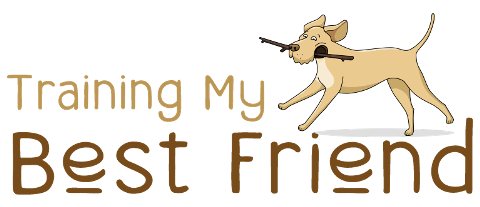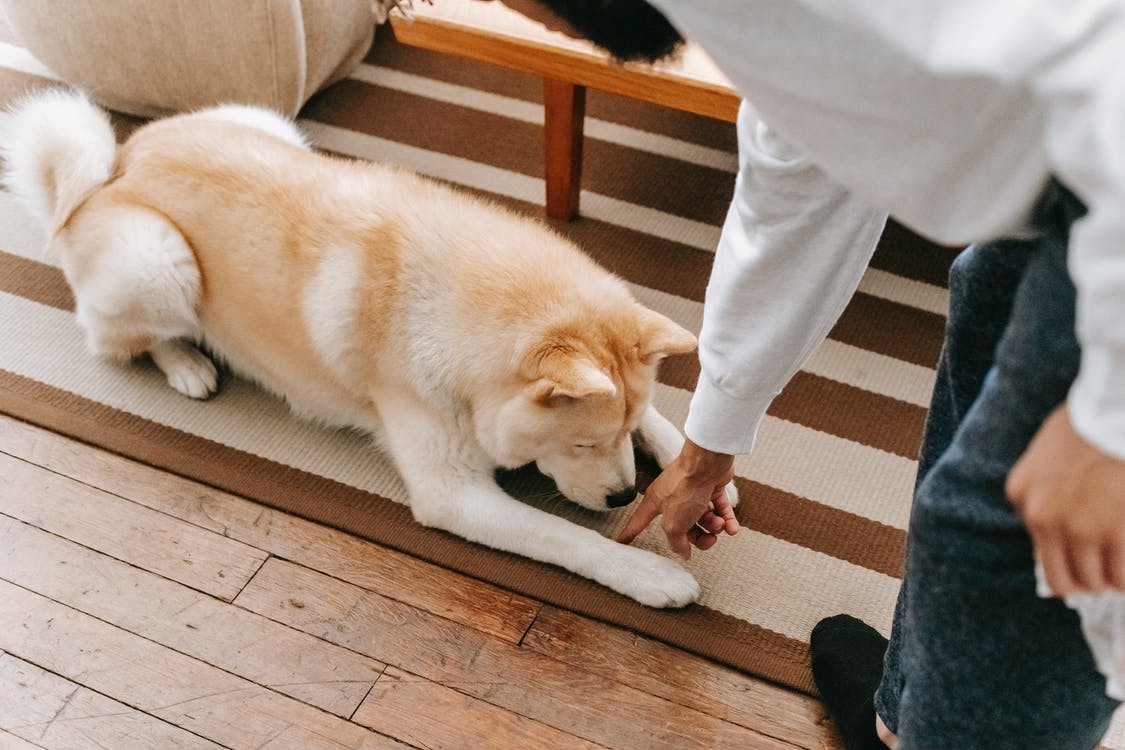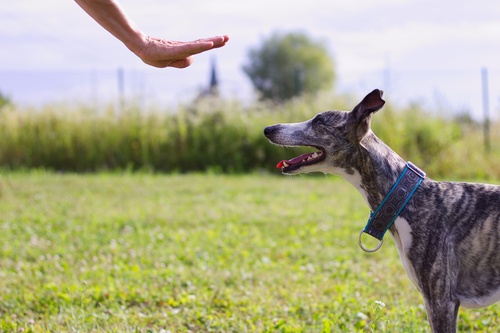10 Essential Dog Training Hand Signals and How to Use Them
Hand signals come in handy when dogs need directions and instructions. A simple hand gesture can relay a message to your dog even without you speaking a single word.
Though some prefer voice signals, using hand signals is also up to par with verbal instructions. Moreover, dog training hand signals are best for those furry pets that are deaf.
You can teach your dog a few tricks using hand gestures. However, there are 10 most essential dog training hand signals that your dog needs to learn.
These signals direct your dog whenever voice signals are useless such as in a noisy place where your pooch can’t clearly hear you and when you have a deaf dog.
10 Essential Dog Training Hand Signals
Watch Me
This simple hand signal is usually the first step when you have to teach your dog non-verbal cues. You can initiate the watch me signal whenever you want your dog to watch you and give you his undivided attention. This signal is very useful when training a dog.
To do this and get your dog’s attention, hold a finger in front of your dog’s nose and slowly bring it in between your eyes. Pointing to your eyes mean that you need your dog to look at you.
Free
Free is often used as one of the dog training hand signals that indicate the dog is free to do his own thing. It may mean the end of a training session or simply just the dog’s playtime.
When doing the free signal, hold your hands above your shoulder with palms open facing forward. Shake your hands left and right as if to say “all done.”
Stay
Stay is the opposite of free and come. Here, your dog needs to stay put instead of doing what he wants to do.
This command is also one of the most important dog training hand signals because it can help keep your dog safe, especially when you are on the street.
Put a hand out at chest level with the palm facing outward to your dog. You can also do this by walking backward. Your dog may follow you at first, but repeat the command until he stays put.
Come
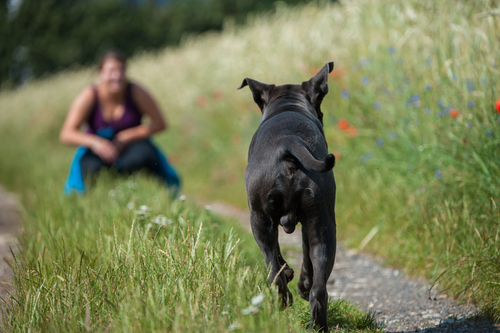
Come is often given as a verbal cue. However, you can use a hand signal for this command as well. This hand signal proves beneficial if your dog is far away and you can’t shout loud enough to call him to come.
You can use one arm or both arms for this hand signal. Start with the arms wide open at shoulder level with your palms facing forward. Then, bring your hand or hands to the opposite shoulder in a diagonal motion.
Sit
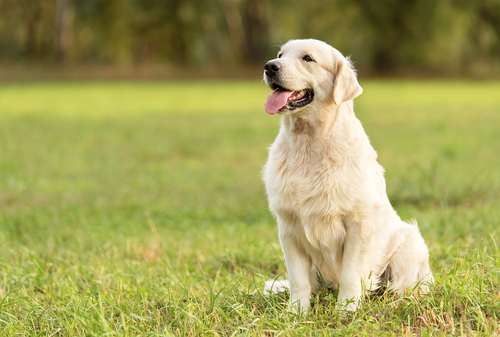
Our list of dog training hand signals wouldn’t be complete without the sit command. This command is very simple, and it’s a natural cue for all dogs to know.
The sit hand signal starts with the palm facing up at chest level. Then, move your hand upwards.
Lie Down

Telling your dog to lie down is made easier with dog training hand signals. This allows dogs to settle down whenever you need them to.
This hand signal begins with your finger in front of you at a horizontal angle. Flick your wrist down at around 90° so that you are pointing on the floor.
Stand
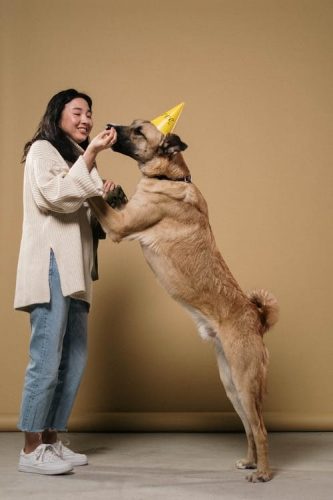
Teaching your canine the stand hand signal should begin with him in a sitting or down position. It is important you have trained him to do the sit and lay down hand signals first.
The stand is an indication that it is fine for your dog to finally stand up when you have instructed him to stay put for a while in either sitting or laying down positions.
To do this hand signal, let your arm relax at your side with your palm facing forward and open. Then, swiftly move your arm backward.
Heel
Knowing the heel command keeps your dog safe most of the time, especially when you are out walking. The heel gives your dog a cue that you want him to walk close by you.
It is also a great signal to prevent leash pulling. Most often, the dogs are trained to heel on the left side. However, you can choose to train your pup on your right side or even both, whichever feels comfortable and proves easier for you.
The heel is characterized by the hand hanging on the side and tapping your hip or thigh. Some people choose not to use the tapping technique. Instead, their hand makes a small circle near their hip to indicate the heel command.
Take It
You use the take it hand signal whenever you want your dog to get something. This dog training command is also fairly easy to act out.
All you have to do when doing the take it non-verbal cue is to hold an open hand with your palm open in front of your dog. Then, close your fist to indicate that you want him to take something.
Drop It
Drop it is the opposite of take it, both in meaning and hand signal. This dog hand signal is useful whenever your dog has something you want him to drop, such as bone scraps picked up from the sidewalk while walking. It can also be useful whenever your dog is chewing on your slipper or other things at home.
To do the drop it action, simply close your hand in a fist and hold it in front of you. Afterward, open your palm to indicate that you want your dog to drop something that he has.
Things to Have When Training for Hand Signals
Technically, there are only three things that you need when doing dog training hand signals. These three things are the following:
Clicker
A clicker may be optional as you can affirm the movement by saying “yes” or praising your dog. However, the clicker proves to be an essential part of dog training as dogs tend to respond better to them.
Treats
There are many treats available on the market for all dog ages. So, whether you are looking for a puppy treat or a treat for a larger adult dog when teaching a verbal command or hand signal, you can find it easily.
However, since you need to give a lot of treats when you do dog training hand signals, you must get a treat that will not hamper your pet’s diet.
Patience
Along with a clicker and the treats, what you need the most is your patience. If you train your dog in-depth, you will need a lot of patience.
Dogs, just like humans, have different learning abilities. Some may learn the signals faster than others. Don’t compare your dog to other people’s dogs. Be patient; your pooch will soon learn what you are teaching him to do.
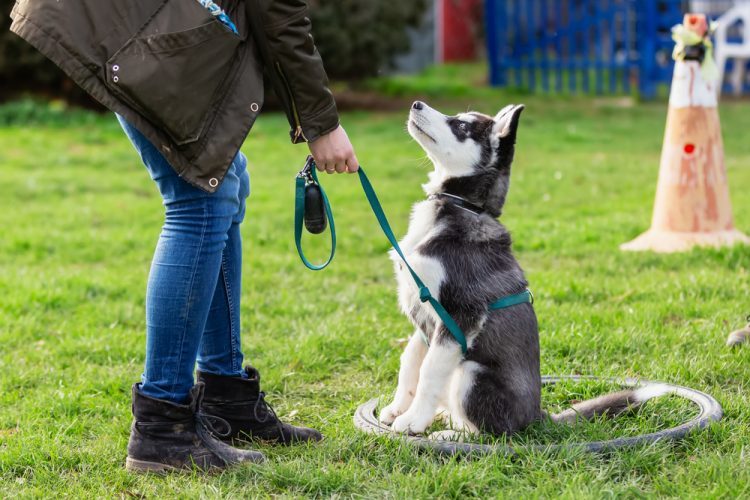
Takeaway
Dog training hand signals are not only intended for competitions and shows but can also be beneficial for domesticated dogs. If you opt to use hand signals to keep your dog under control, make sure you have what it takes to teach him these hand movements.
Moreover, the patience and effort you put into training your pup will be worth it as soon as you see him respond to your non-verbal cues. Such cues can be used in many settings when verbal dog commands are ineffective.
